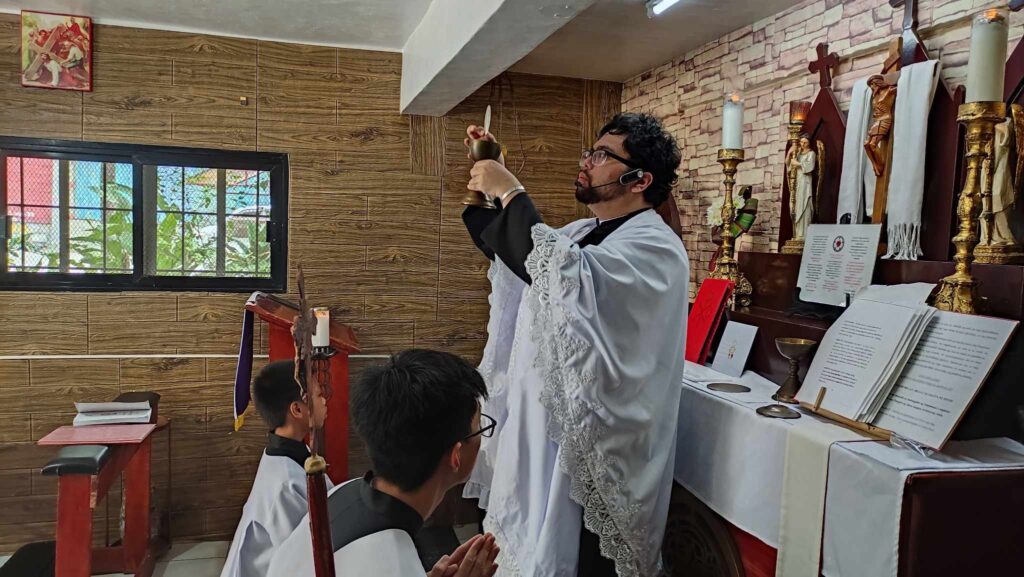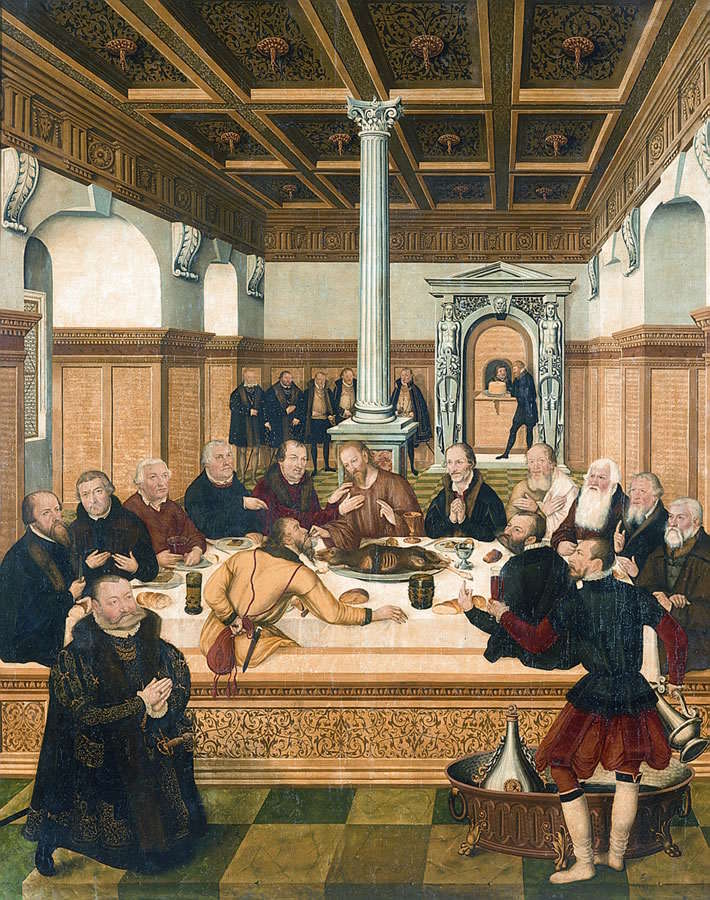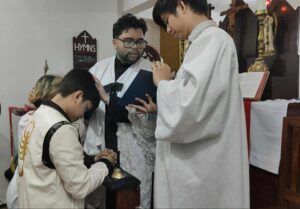Have you ever wondered what do Lutherans believe about communion? This article will explore the Lutheran understanding of the Lord’s Supper, examining what makes this sacrament so central to our faith and worship. The Lord’s Supper is a sacrament instituted by Christ himself, where His true body and blood are genuinely present, communicated, and received, offering the forgiveness of sins to all who partake in faith.
What is the Lord’s Supper? A Foundational Definition
What Do Lutherans Believe About Communion? The Lutheran understanding is both profound and comforting. According to the Small and Large Catechisms, the Lord’s Supper “is a sacrament of the New Testament, instituted by Christ himself, in which the true body and the true blood of our Lord Jesus Christ, in and under the bread and wine, are truly communicated to all who eat and drink, and the promise of grace is applied and sealed to every believer.”

To understand this definition, we must first grasp what Lutherans mean by “sacrament.” A sacrament is a sacred act instituted by Christ himself, consisting of a visible sign (bread and wine) combined with an invisible grace (forgiveness of sins and spiritual nourishment). More than mere ceremonies or rituals, sacraments are God’s appointed means of delivering His grace to His people.
The “promise of grace applied and sealed” refers to the assurance that our sins are forgiven and that we are recipients of God’s mercy. Through the Lord’s Supper, God delivers His grace to us through the true body and blood of Christ.
The Biblical Basis: Christ’s Own Words
The foundation of Lutheran communion theology rests firmly on Scripture, particularly the institution narratives found in the Gospels and Paul’s writings. During the Last Supper, Jesus took bread and wine and spoke these words: “Take, eat, this is my body, which is given for you. This do in remembrance of me.” After supper, He took the cup saying, “Drink ye all of it; this cup is the New Testament in my blood, which is shed for you and for many, for the remission of sins; this do as oft as ye drink it, in remembrance of me” (Matthew 26:27-28, Mark 14:22-24, Luke 22:19-20).

These words are not merely recorded in the Gospels but are also affirmed by the Apostle Paul in his letters to the Corinthians. Paul received this teaching directly from the risen Christ and passed it on to the early church. In 1 Corinthians 10:16, Paul asks: “The cup of blessing, which we bless, is it not the communion of the blood of Christ? The bread which we break, is it not the communion of the body of Christ?” This rhetorical question expects an affirmative answer—yes, the bread and wine are truly the communion of Christ’s body and blood.
Lutheran Real Presence explained centres on taking Christ’s words literally rather than figuratively. The Lutheran position maintains that “the words of the Testament of Christ are not otherwise to be understood than in their literal sense.” When Jesus says, “This is my body,” He means exactly what He says. We believe this for several compelling reasons:
- Christ is eternal Wisdom and Truth itself. He knew exactly what He was saying and has the power to accomplish what He promises. (Luke 21:33)
- The Gravity and Importance of the Institution. Christ instituted this very sacrament when He was about to begin his bitter suffering and death very thoughtfully and seriously. When He spoke the Words of Institution, He certainly had at heart that which was greatest and of most importance.
- The Circumstances of the Lord’s Supper and Christ’s Clarity. The setting of the Last Supper itself provides strong evidence. Christ gave the command to eat His body and drink His blood “at the table, during the supper,” undeniably referring to true natural bread and true natural wine, consumed physically. Furthermore, Christ deliberately prevented any metaphorical interpretations, ensuring that “no metonymy, that no change in the meaning of the word body, that no sign or figure, or the power or benefits of the absent body of Christ, should be understood.” He spoke clearly of His true, essential, and substantial body given for our sins, and His true essential blood shed on the cross.
- The consistent witness of all three Evangelists and Paul, who repeat these words precisely in the same manner and in the same words, confirms their literal interpretation.
“In, With, and Under”: Understanding the Sacramental Union
The manner of Christ’s presence in communion is explained through the concept of sacramental union. This doctrine teaches that there are “two things in the sacrament, an earthly, namely bread and wine, and a heavenly, namely the body and blood of Christ.” These elements are not merely side by side but are united in a supernatural and inexpressible manner.
To properly understand sacramental union, we must distinguish it from other views:
Rejection of Transubstantiation: Unlike Roman Catholic teaching, Lutherans reject the idea that the bread and wine lose their substance and are entirely changed into Christ’s body and blood. In transubstantiation, only the “accidents” (appearance, taste, texture) remain while the substance is completely transformed. Lutherans maintain that the bread remains bread and the wine remains wine, while Christ’s body and blood are truly present alongside them.
Rejection of Consubstantiation: This view suggests a local inclusion of Christ’s body and blood within the bread and wine, as if they were contained like liquid in a container. Lutherans reject this crude understanding, emphasising instead that the union is supernatural and incomprehensible.
Rejection of Symbolic Views: Against Reformed theology, which teaches that communion is primarily spiritual and symbolic, Lutherans insist that Christ’s words mean exactly what they say. The Calvinist position treats the bread and wine as “nothing else than a symbol, that is, a sign or figure of the body of Christ, which body is not in the Eucharist on earth, but only in heaven.” This directly contradicts Christ’s clear words, “This is my body.”
Sacramental Union Defined: This divine operation unites earthly and heavenly elements “in a supernatural and inexpressible manner” during the true use of the supper—eating and drinking. When the bread is distributed, Christ’s body is truly present and distributed. When the wine is shared, Christ’s blood is truly present and shared.
Lutherans use the phrase “in, with, and under the bread and wine” for three important reasons: to reject transubstantiation, to indicate the sacramental union of sign with the thing signified, and to affirm that Christ’s words must be understood literally as they read.
The Purpose and Benefits of Receiving the Lord’s Supper
The Lord’s Supper serves multiple vital purposes in the life of believers. Its primary design is to remind faith of the benefits received from Christ and to encourage and comfort “affrighted consciences.” When we participate in communion, we’re not merely remembering Christ’s sacrifice—we’re actively receiving the promise of grace applied and sealed to every believer.
The Eucharist provides spiritual nourishment that strengthens our faith and offers a sure pledge of God’s grace. Through this sacrament, Christ refreshes, comforts, and strengthens His people. The promise attached to communion—”This is my body, which is given for you; this is my blood, which is shed for you, for the remission of sins”—provides tremendous assurance to troubled hearts.
Importantly, the Lord’s Supper is not a work we perform to earn merit with God. Rather, it’s a gift from God, a means by which He delivers His grace to us. We come not because we are worthy, but because we are needy. Even those weak in faith, troubled Christians who feel unworthy because of their great sins, are invited to receive this noble treasure. What matters is not our perfection but our sincere desire to receive Christ’s forgiveness and to serve God with stronger faith.
The benefits of regular communion include the forgiveness of sins, the strengthening of faith, comfort for troubled consciences, and the assurance of God’s love. As we participate more frequently, our hearts are increasingly inflamed with love for God, and our faith grows stronger through this tangible encounter with our Saviour.
Conclusion: A Great Comfort and Blessing
For Lutherans, the Lord’s Supper stands as one of the greatest comforts and blessings available to believers. It is a tangible, real, and profoundly meaningful sacrament where Christ truly gives His body and blood for the forgiveness of sins. Unlike mere symbols or spiritual exercises, communion offers us an actual encounter with our risen Lord, who comes to us in His appointed means of grace.

At the Church of the Augustana in Southeast Asia, we continue to treasure this precious gift that Christ has given to His church. We invite you to join us in worship and learn more.
*Since the Bible calls the Lord’s Supper an expression of common faith, we invite only to the Lord’s Table those who have studied and confessed their agreement with the teachings of our church. This practice, called “Closed Communion,” is the historical practice of the Christian Church, although many churches no longer practice it.
Whether you’re seeking a deeper understanding of Lutheran theology or looking for a church home where the historic Christian faith is proclaimed and practised, we welcome you to discover the rich tradition of Lutheran liturgy and sacramental life.



